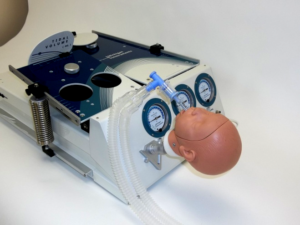Acute Respiratory Distress Syndrome, or ARDS, is by no means a new condition in the respiratory care industry, but there are certainly some new treatments being tested to help treat it. Herneations, H1N1, SARS and many other conditions are all forms of ARDS, and it can affect patient of almost any age. High-frequency oscillatory ventilation (or HFOV) is an innovative form of respiratory care that, in America, is not widely used or understood. Michigan Instruments provides an explanation below.

High-frequency oscillatory ventilation explained:
Fortunately, the concept is simple. A healthy person in need of respiratory assistance is usually ventilated at a rate of 12-14 breaths per minute, each consisting of 400-700mL of air. HFOV, on the other hand, will deliver tiny ventilations, perhaps about 10-30mL, hundreds of times every minute. These tiny injections are understood to put less strain on the already distressed lungs than the conventional 600mL ventilations.
Unfortunately there are very few testers that can analyze the performance of an HFOV ventilator, and it is for this reason, at least in part, that the practice has not become more widespread. Flow measurements are particularly hard to perform on HFOV injections, and the diffusion path of delivered gas through the respiratory system is almost impossible to monitor.
In part two of this 3-part series, Michigan Instruments will dive into the details regarding output assessment and how to properly monitor the effectiveness of this technique.
If you have any questions about the use of high-frequency oscillatory ventilation, don’t hesitate to contact Michigan Instruments anytime.

